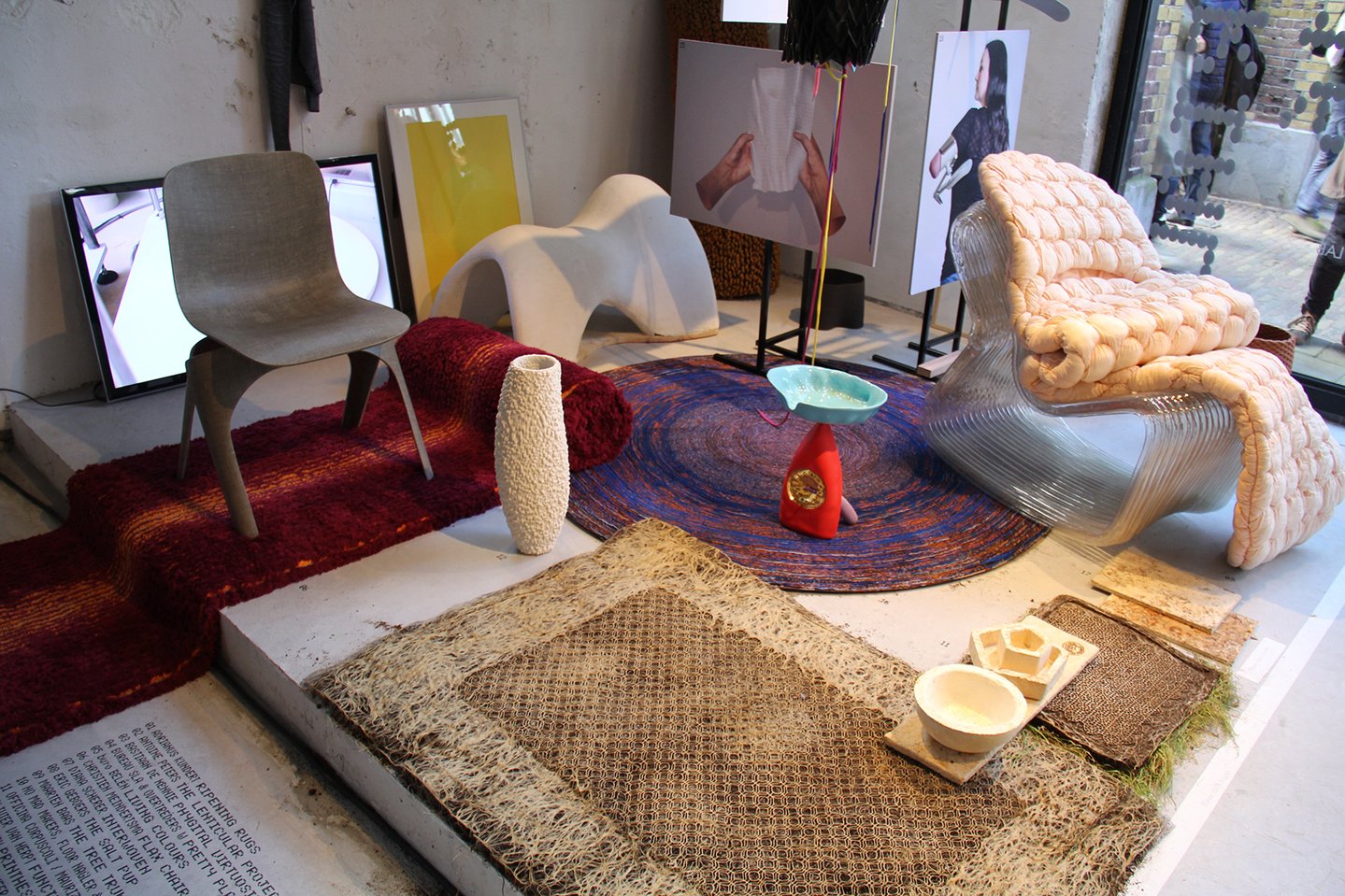
An undoubted highlight of this year’s Dutch Design Week, the exhibition for the New Material Award presented a carefully selected group of material makers who demonstrated unique and inventive approaches to the development of materials.
Using the fast growing root system of wheat, Dutch designer Diana Scherer has developed a completely organic bio-engineered surface material. By introducing a specially designed subterranean template, Scherer has found a way to produce an entirely grown material for the Interwoven project.
With the designer's intervention at the start of the process, the plant itself cultivates the densely packed woven layers with Scherer once again entering the process at the end. At this stage the designer closes the loop by harvesting the root system – at by which point it is a patterned surface.



Ripening Rugs was one of our favourite projects at the Design Academy Eindhoven this time last year so we were pleased to see it had been selected for the award. By engaging with natural wear and tear as well as cutting back into the bound yarns, Adrianus Kundert reveals hidden layers of colour within the surface.
At times subtle, at certain points much more apparent, these incisions help to produce previously unseen colour combinations and ever-changing pattern.





Another of our favourite exhibitors from last year, design duo Belen, had been selected for their Living Colour series. Another project that offers the user an appreciation of a life-lived over time, the interior paper and textile surfaces are dyed with vegetable dyes. Because of this, they exude inherent variability of tone and due to the ‘living’ nature of the dye will naturally change – and where fully exposed, fade over time.

Eric Geboers has created a new material from brine which he found is a fairly abundant resource in desert regions, where it accumulates as a by-product of desalinating seawater to provide drinking water.
As apposed to pumping this high salt liquid back into the sea, Geboer has discovered a process of mixing starch, a little regular water with the salty brew and applying heat which creates a new cast and settable material.
With speculative plans to use the material to build new architectural forms in the desert, the designer has already begun to produce 3-D objects including seating.


Once sorted into colour, the household plastic waste amassed by the Overtreders W and Bureau SLA team is reprocessed through a set of self designed machines that shred, melt and injection-mould the mix into hexagonal solid tiles. As well as producing functional surface materials the Pretty Plastic Plant also acts an educational facility for children, helping them to see, through demonstration, just what can be done with our daily waste.


The Growing Lab – Mycelia proposes a number of new material solutions and products that are generated through the growth of Fungi. Ecological and self sustaining to the core, once transformed by fungi, the organic waste material on which they were developed becomes reusable yet completely biodegradable, extending it’s life and saving it from landfill.


Whilst flax is a ‘cleaner’ and more natural fibre to manufacture and work with than cotton, manufacturers regularly overlook it. Christien Meindertsma hopes to change this. Having purchased 10,000 kilos of the raw material the designer mixed it with a bioplastic known as polylactic acid and created a formable rigid material from which a series of chairs have been made.

A common trend throughout the whole of Eindhoven this year (which we’re hoping is more than a mere ‘trend’) was centered around sustainability, most specifically, useful recycling of waste materials. Another project that we first spotted last year, Simone Post’s Vlisco Recycled Carpet, was also selected for the award. Taking off-cuts of the world famous Batik fabric from Vlisco, Post reconstitutes strips of the material into rugs that both conceal and reveal the bold patterns that adorn the printed fabric.
For more information, visit the New Material Award website .